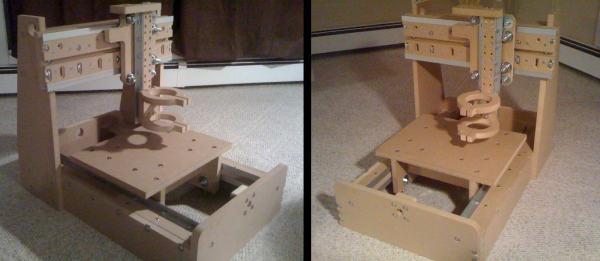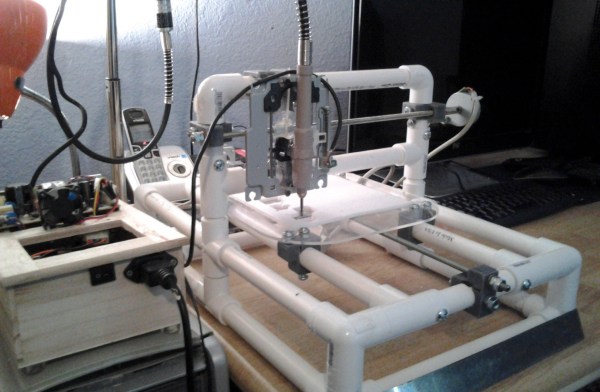In the world of hobby-level CNC cost and simplicity are usually the name of the game. Using inexpensive and easily found materials makes a big difference in the feasibility of a project. [FreeRider] had built a CNC router before but it was big, flexible and not as accurate as he wanted. He set off to design his own table top router, influenced from other designs found on the ‘net, but also keeping the costs down and ease of build up.
The machine frame is made from 3/4″ MDF and was cut on [FreeRider’s] first router, the JGRO. Notice how all the holes are counterbored for the many bolt heads. It is clear that much attention to detail went into the design of this machine. Aluminum angle act as linear rails on which v-wheel bearings travel. Skate bearings support 5/16″ threaded rod used as lead screws. Lead nuts are tapped HDPE blocks and seem to be doing a satisfactory job with minimal backlash.
[FreeRider] says his new machine is capable of 60 inches per minute travel, double that of his old machine. Since the new machine is stiffer, he’s able to route aluminum and has successfully made some brackets out of 1/8″ plate. He reports the dimensional accurate to be about 0.002-0.003 inches. For more inexpensive MDF-based CNC machines, check out this drawer slide bearing one or this one that uses a drill for a spindle.














